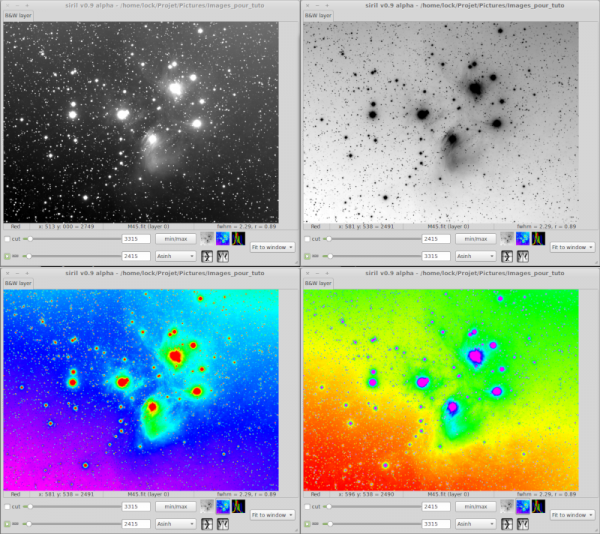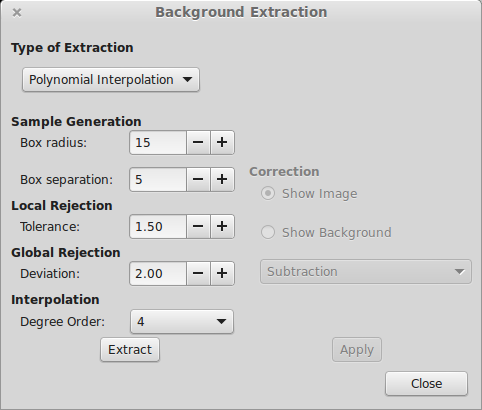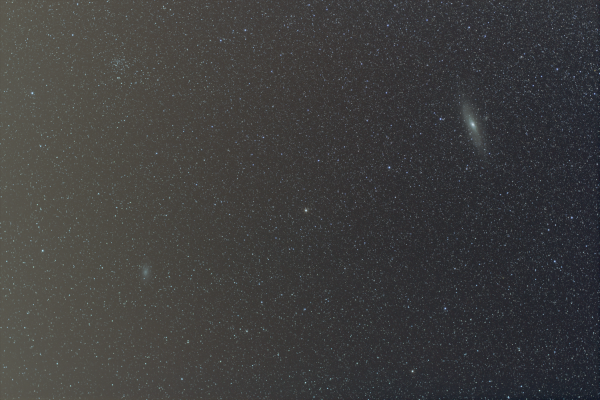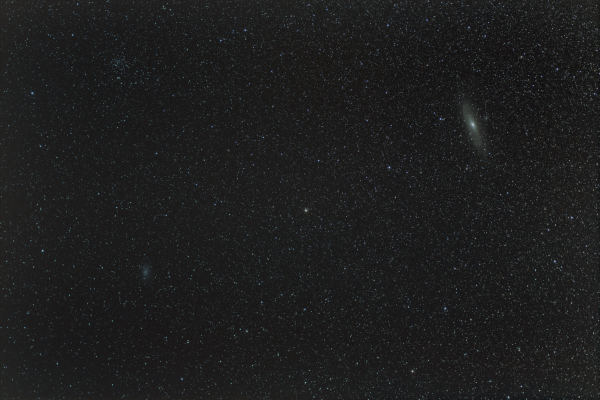No edit summary |
Created page with "Une fenêtre de prévisualisation est utilisé afin d'améliorer la visibilité de l'image, sans altérer ses données de pixels en aucun cas, semblable à ce que fait l'éche..." |
||
| Line 6: | Line 6: | ||
=Un puissant outil de prévisualisation des images d'astronomie= | =Un puissant outil de prévisualisation des images d'astronomie= | ||
Une fenêtre de prévisualisation est utilisé afin d'améliorer la visibilité de l'image, sans altérer ses données de pixels en aucun cas, semblable à ce que fait l'échelle de [[DS9]]. | |||
* | *Linéaire : le mode par défaut de Siril sont affichés du plus sombre au plus clair dans une échelle linéaire. | ||
* | *Logarithme: l'échelle logarithmique | ||
All these modes can also be applied independently on each layer, when layer chaining is disabled. | All these modes can also be applied independently on each layer, when layer chaining is disabled. | ||
Revision as of 19:04, 2 March 2015
Siril : mode d'emploi
Ceci est la page principale de la documentation de Siril, un logiciel libre destiné au traitement des images d'astronomie. Cette page contient plusieurs tutoriels vidéo ainsi que des liens vers d'autres pages qui contiennent elles-aussi des vidéos ainsi que des images. De nombreuses fonctionnalités sont expliquées dans une vidéo. Les flux de traitement pour le ciel profond et le planétaire sont décrits dans une série d'images comprenant une description ou dans un format vidéo dans la section suivante : complete sequence processing
Un puissant outil de prévisualisation des images d'astronomie
Une fenêtre de prévisualisation est utilisé afin d'améliorer la visibilité de l'image, sans altérer ses données de pixels en aucun cas, semblable à ce que fait l'échelle de DS9.
- Linéaire : le mode par défaut de Siril sont affichés du plus sombre au plus clair dans une échelle linéaire.
- Logarithme: l'échelle logarithmique
All these modes can also be applied independently on each layer, when layer chaining is disabled.
This video tutorial shows the different modes you can use to display your images.
<html5media width="750">http://free-astro.vinvin.tf/videos/Display.webm</html5media>
In addition to this, Siril provides different colour maps display, including false colour rendering.

Tutoriel pour le pré-traitement complet d'une séquence
Ce tutoriel illustré décrit les étapes de pré-traitement, de la récupération des images brutes de l'appareil photo à l’empilement de ces dernières.
- Convert your images in the FITS format Siril uses (image import)
- Work on a sequence of converted images
- Pre-processing images
- Registration (PSF image alignment)
- Stacking
Une vidéo sur le traitement planétaire est également disponible.
<html5media width="750">http://free-astro.vinvin.tf/videos/mars_processing.webm</html5media>
Process your single images
Background extraction
When an image contains an intense light pollution, it is useful to remove it. Siril provides a "Background Extraction" tool in order to remove the gradient of the sky background. Siril uses two methods for background modelling, a polynomial up to the fourth degree, or a 2-D spline. The 4th degree polynomial is generally a good choice, for this model, though the tool allows for first to fourth degree.
After extraction you can switch between image and background view in order to check the result. If you are satisfied you can thus apply the correction (subtraction or division). The subtraction operation is very different from the simple operation used for the darks and bias/offsets. Indeed, as the level of the background is identical to the one of the image, applying a simple subtraction would result in a image with a lot of black pixels. To avoid any inconvenience, the operation is done with 32-bit signed integers and finally converted into native format (16-bits unsigned).
Following, respectively, the start image and final image (after background extraction with subtraction and equalization):
When Polynomial extraction gives wrong results, a new algorithm has been developed in order to compute background. It uses 2-D surface splines interpolation, which is more adaptable. In consequence it is very important to play iteratively with parameters in order to check the background model. The video below shows this new algorithm in action. At the end of the process, a mid-tones transfer function is applied to the image.
<html5media width="750">http://free-astro.vinvin.tf/videos/background_spline_and_MTF.webm</html5media>
Color calibration
The colour calibration tool performs a balancing of the colours of a linear RGB deep-sky image. This video tutorial shows how to use the tool. Note that Background Equalization (now called Background Neutralization) has been moved in the calibration box because it is needed before any calibration. This tool may not be very stable or give accurate results yet.
<html5media width="750">http://free-astro.vinvin.tf/videos/Color_Calibration.webm</html5media>
Reducing green tint in processed images
This video tutorial shows how to remove the green tint in processed images using the graphical user interface. This function can also be accessed from the command line, with the rmgreen command.
<html5media width="750">http://free-astro.vinvin.tf/videos/RemoveGreen.webm</html5media>
Fast Fourier Transform (FFT)
A FFT algorithm is integrated to Siril in order to provide you a tool to evaluate fixed pattern noise of an image. You can thus remove the frequency pattern of the noise in the modulus file and save the result. Modulus and phase are saved in different files so you can compute the inverse transformation to retrieve the corrected image.
<html5media width="750">http://free-astro.vinvin.tf/videos/FFT.webm</html5media>
Tutorial for a complete image processing
An illustrated tutorial has been compiled to describe the usual processing steps for a video tutorial, starting from the stacked file.
RGB Compositing
A new channel synthesis tool is provided in Siril. This tool allows you to mix and align up to 7 channels plus one for Luminance. The tool handles the binning, just make sure to not crop the picture before: the bin1x1 MUST be loaded first to give the composited image dimensions.
The first video shows a mixing between L, R, G and B channels with same size and no alignments needed: the L channel is given by an H-alpha processed image. This second video shows mixing between images with different binning. The alignment is also required.
After mixing, save your result and process it as you want.
<html5media width="750">http://free-astro.vinvin.tf/videos/RGB_compositing.webm</html5media>
<html5media width="750">http://free-astro.vinvin.tf/videos/RGB_compositing2.webm</html5media>
Astrométrie
Siril fournit quelques outils d'astrométrie.
En particulier, est disponible la fonction PSF (Fonction d'étalement du point), qui utilise l'algorithme de minimisation de Levenberg–Marquardt. Voir la page dédiée pour une vidéo explicative.


